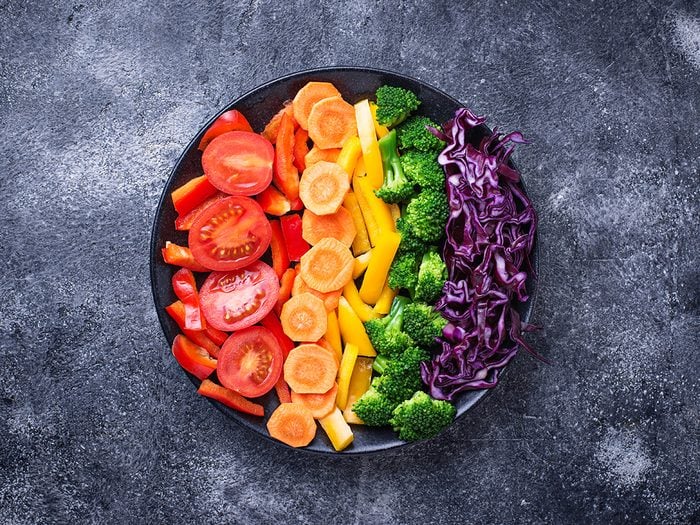
What it means to “eat the rainbow”
Want to slow aging, stave off heart disease and cancer, and protect your brain? Pile your plate with colour. In other words, if you want to eat the rainbow, your plate should look like one. The same pigments that lend bright colours to the fruits and vegetables we eat also provide health benefits to our bodies. “I encourage people to have the whole spectrum of colour every day,” says Dr. Daniel Nadeau, co-author of the nutrition guide The Color Code: A Revolutionary Eating Plan for Optimum Health.
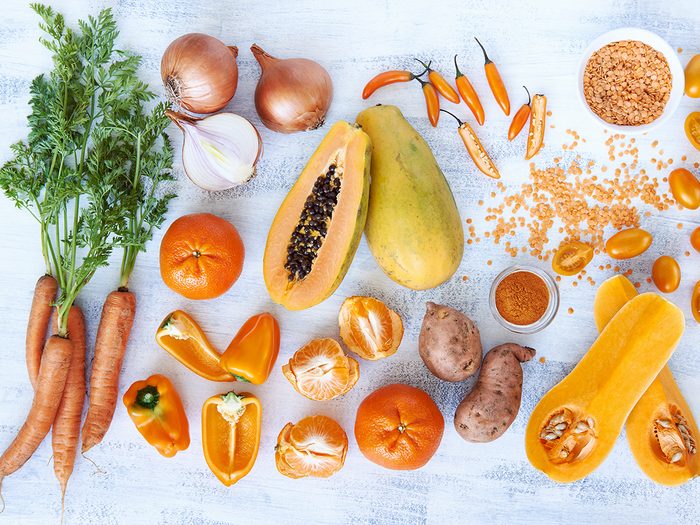
Yellow & Orange
Fruits and vegetables such as carrots, mangoes, peaches and corn are rich sources of carotenoids, a class of phytochemicals that includes beta carotene and lutein. Carotenoids, like so many of the substances in fruits and veggies, have been shown to battle cancer. “They’re also important for the health of your eyes,” notes research scientist Dr. Jim Brandle, CEO of the Vineland Research and Innovation Centre in Lincoln, Ontario. Carotenoids lower the risk of macular degeneration, an age-related eye disease. Citrus fruits like oranges and grapefruits also fall into this colour class. They’re loaded with vitamin C, which fortifies the immune system.
Discover more science-backed ways to boost your immune system.
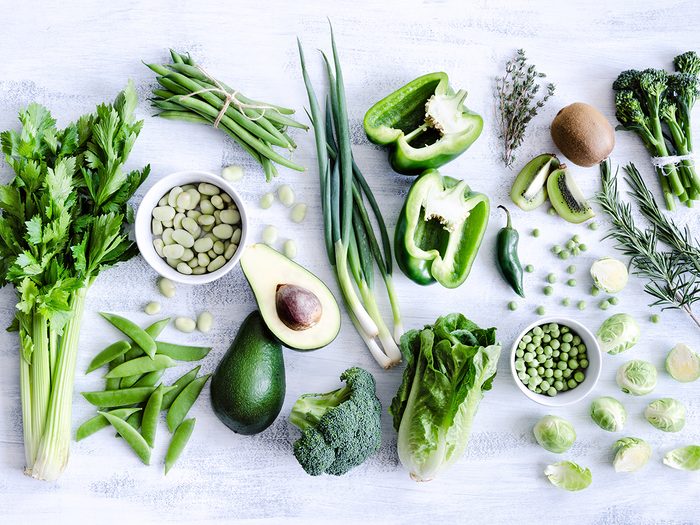
Green
Goodies like kale, broccoli, avocado and cabbage contain chlorophyll, which recent research suggests may also ward off cancer. Dark green chlorophyll is often a cover-up for additional pigments like the yellowy carotenoids. Spinach, for example, is very high in lutein. Broccoli contains a number of cancer-fighting compounds and is good for your heart to boot.
Don’t miss our ultimate guide to healthy grocery shopping.
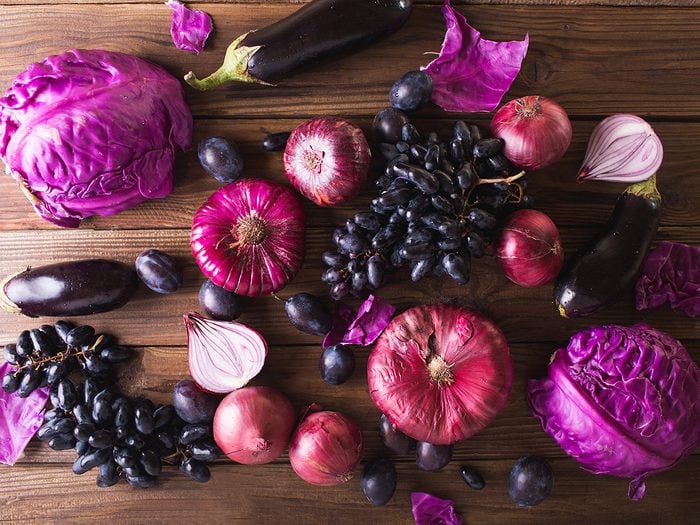
Blue & Purple
Produce such as blueberries, blackberries, concord grapes and plums is packed with phytochemicals in a class called anthocyanins. “Anthocyanins are powerful antioxidants,” says Maricel Reddy, a registered dietitian in Edmonton. “They have been linked to helping slow down the development of cancer by destroying free radicals.” What else can fruits of this hue do for you? The blueberry has been nicknamed the “brain berry” by scientists because of its ability to safeguard our brain cells. The concord grape is easily as mighty with its 31 different types of anthocyanins.
Find out the healthiest fruits you can buy.
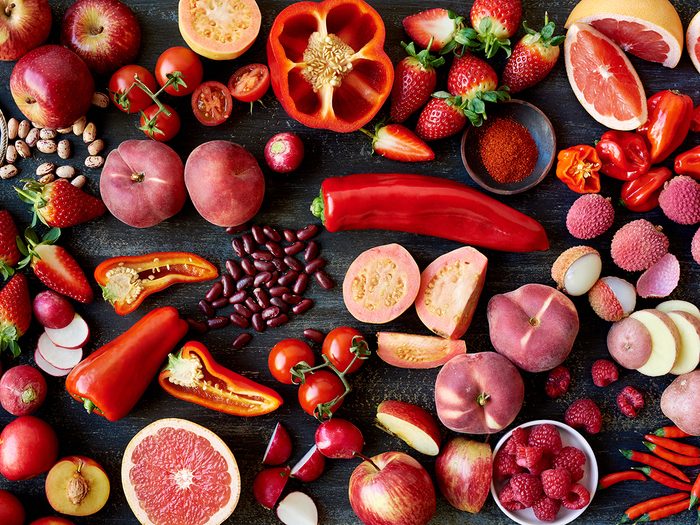
Eat the rainbow of red fruits and veggies
Red fruits and veggies include beets, tomatoes, red bell peppers and watermelon. They, like the blue fruits, get most of their colour from anthocyanins. But you need only look at all the different shades of red in these foods to appreciate the variety of pigment combinations they contain. Tomatoes are particularly high in lycopene and have been shown to protect the prostate from cancer. Strawberries are thought to guard the brain against aging and reduce risk of heart disease. Cherries may help reduce joint pain from arthritis.
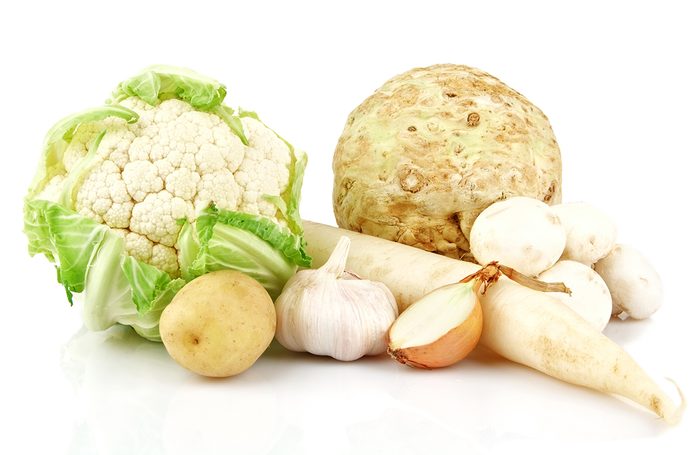
How to Eat More Fruits and Vegetables
Pale-coloured produce like garlic and cauliflower should also be on your radar, says Brandle, because many phytochemicals are colourless. “There are lots of things you can’t see,” he notes. The vitamins, minerals and fibre contained in all fruits and veggies, including white ones, only add to their potency.
Reach for ready-peeled carrots or bagged salads if it’s convenience you’re looking for. Choose fruit juices that have no added sugar. Pure concord grape juice contains the entire fruit, skin and all.
“There’s always a way to get more fruits and vegetables,” says Reddy. “Cut up an orange and put it in your salad. Throw a banana into a shake. Do it in different ways so it doesn’t seem monotonous.”
Now that you know how to eat the rainbow of fruits and veggies, check out 20 high-antioxidant foods worth adding to your cart.